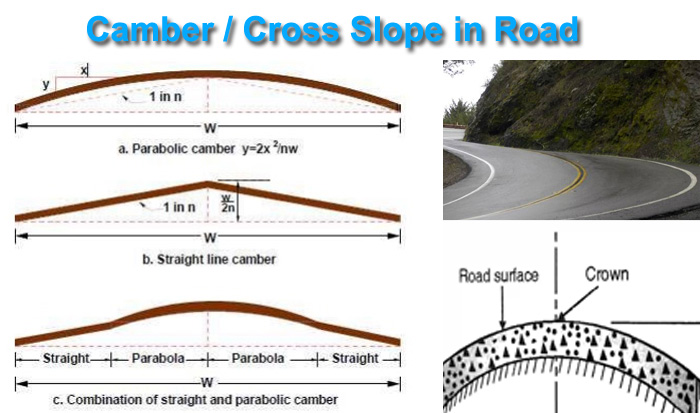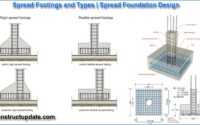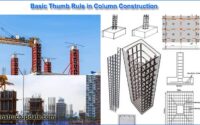Types of Camber in Road | Cross Slope in Road | Camber Advantages | Camber Methods
The median part of the road surface is elevated in comparison to the margins, which is typically seen on motorways. Camber is the term for the slope that runs diagonally.
The camber’s purpose is to drain rainwater away from the road surface along the borders.
The slope added to the road surface in the transverse direction to drain rainwater out of the road surface is known as camber. It’s also known as the road’s cross slope.
Camber is usually expressed as 1:n ( 1 in n ) (1 vertical to n horizontal) or in percentages as n percent (for instance, 1 in 50 or 2 percent ).
Camber design values are mostly determined by the type of pavement as well as the area’s normal rainfall. Surface water can be removed with the use of steep cambers.
However, they are not suggested because they will wear the surface down. Cambers with a slope of 2 to 3 percent are commonly used.
Their shoulders having a 0.5 percent higher cross fall than the carriageway on straight parts of the road.

Camber has several different types.
Composite camber.
Sloped or Straight camber.
Two straight line camber.
Barrel camber.
- Composite Camber
It has a parabolic or round crown and two straight slopes from the edges.
- Sloped or Straight Camber
It is made up of two straight hills that meet in the middle of the carriageway. This style of camber is fairly straightforward to construct.
- Two Straight Line Camber
This form of camber is appropriate for Indian roads since it comprises of two straight lines that are sharper towards the borders and flatter near the crown.
- Barrel Camber
It is made out of a continuous elliptical or parabolic curve. For roads with fast-moving automobiles, this form of camber is preferable.
Camber-Providing Method
The appropriate camber is delivered to the subgrade, and templates or camber boards with the prescribed camber are manufactured to provide the desired amount and form of camber. The material for the subgrade is spread out and hand-paced into the correct camber shape.
The rolling process then begins from the perimeter and worked its way to the center. The top surface is then checked with the use of templates or camber boards. either distributing or removing the material as needed to correct the shortfall
The Benefits of Camber in Road Construction
This prevents rainfall from collecting at local shrinkages or depressions and generating water pools around the road surface, which are both unpleasant for the public and the road structure.
Camber allows rainwater to drain quickly, preventing the foundation course of this road structure from being weakened by rainfall percolating through the road surface.




